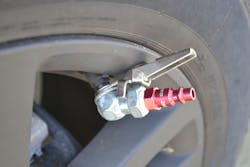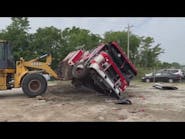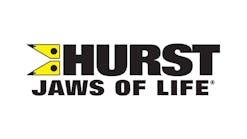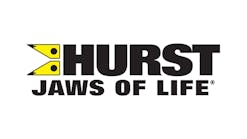University of Extrication: Vehicle Stabilization Skills Update
Subject: Skills Update—Vehicle Stabilization
Topic: Tire Deflation
Objective: Adapt and update the task of vehicle stabilization to address the presence of tire-pressure monitoring systems or run-flat tires.
Task: The rescue team shall simulate tire-pressure monitoring systems and run-flat tires on a vehicle in a training setting and accomplish vehicle stabilization through tire deflation and/or a vehicle lift.
For a passenger vehicle resting on four inflated tires on a level surface with occupants injured and/or trapped inside, stabilization of that vehicle is typically accomplished by using the “chock-block-blow” technique—placing wheel chocks on both sides of a drive wheel, setting step chocks or cribbing along the undercarriage, and then deflating the tires. This settles the weight of the vehicle onto the cribbing beneath and makes for a more stable vehicle in which to perform medical and rescue tasks.
This “Skills Update” article focuses on how these basic methods that we currently use for vehicle stabilization have to be altered or updated due to the new technology of tire-pressure monitoring (TPM) systems as well as run-flat tires.
Our last review
The September and October 2015 University of Extrication columns looked at these two new technologies in detail. In short, it was reported that tire deflation by means of pulling the valve stem out of the rim or cutting a valve stem with side cutters may not work any longer due to the TPM system. The large transmitter at the base of the valve stem prevents the stem from being pulled. Because it will likely be a metal valve stem, you also may not be able to cut the TPM stem with side cutters either.
When it comes to run-flat tires, even if you were able to puncture their thick sidewalls, they don’t need air to retain their shape. Puncturing a run-flat with a Halligan, for example, may get you nowhere. The tire might not flatten and the vehicle wouldn’t settle onto the cribbing below.
Training time
So how, during a training exercise, do we train our crews on tire-deflation options when confronted with a TPM system or run-flats? The instructor can simulate that the old junker you are cutting up for training has a TPM system and that the valve stems are metal by using a bright color spray paint to highlight the valve stem.
To make it a ”worst-case scenario,” the instructor can also simulate that the vehicle has run-flat tires all around by painting the sidewall of the tires. Now your crew has to adapt and overcome in a training environment to better prepare for the real world. They have encountered new technology by simulating these features on a 10- or 15-year-old car that you are going to cut up.
To deal with the metal TPM valve stem challenge, the crew can explain that they would attempt to snap or break the metal valve stem in two. They could also use what is known as a ball tire air chuck with a valve stem lock-on clip. One of these units would be attached to each valve stem to allow air to escape from the tire.
To deal with the run-flat tire challenge, the crew could stabilize the vehicle by coordinating a vehicle lift. One firefighter, with their back against the vehicle, grabs the fender lip and uses their legs to slightly lift the vehicle while their partner slides step chocks or cribbing underneath. The run-flat tire is not deflated, but the vehicle will still rest firmly on the cribbing below with the gentle vehicle-lift technique.

Ron Moore
RON MOORE, who is a Firehouse contributing editor, recently retired as a division chief with the McKinney, TX, Fire Department and now serves with Prosper, TX, Fire Rescue. He self-published the Vehicle Rescue 1-2-3 training manual and serves as the forum moderator for the extrication section of Firehouse.com . Moore can be contacted directly at [email protected].






